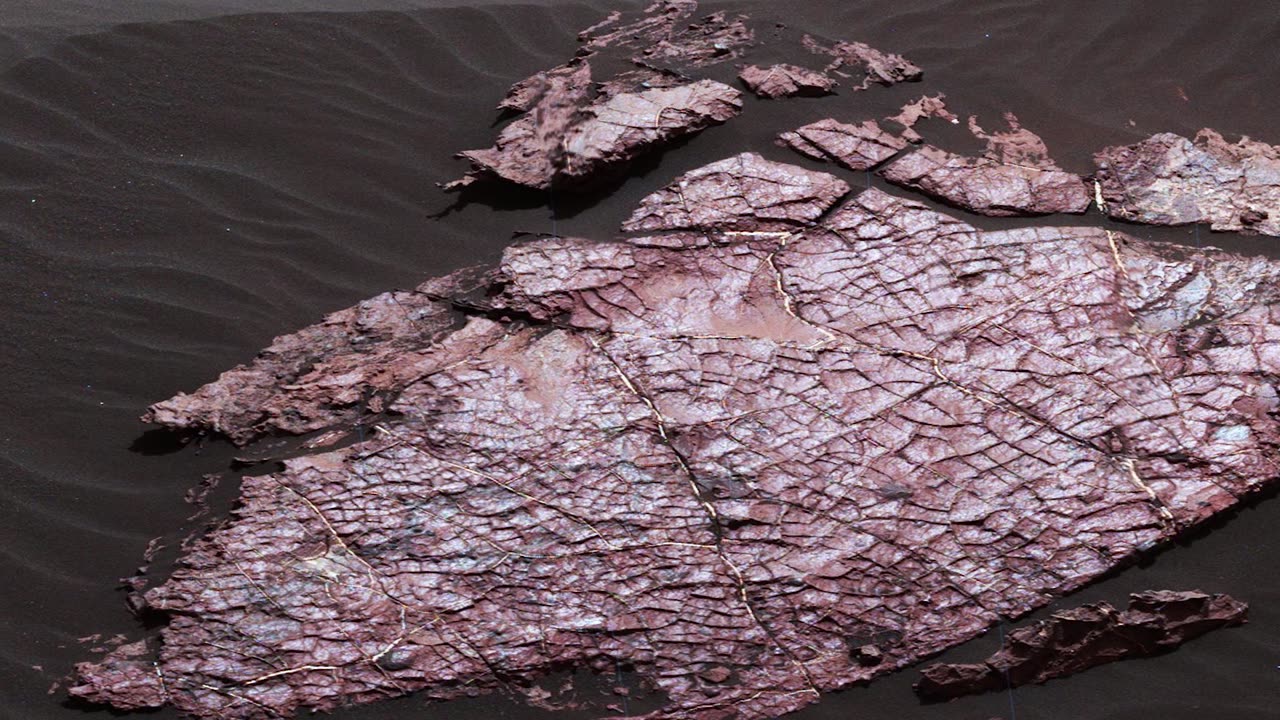Premium Only Content

Mars : A Guide to Gale Crater
August 02, 2017
The Curiosity rover has taught us a lot about the history of Mars and its potential to support life. Take a tour of its landing site, Gale Crater.
TRANSCRIPT
In 2012, NASA’s Curiosity Rover went to Mars to explore Gale Crater, a large impact basin with a massive, layered mountain in the middle. How did this strange landscape come to be? And what can its history teach us about the potential for life on Mars? After several years of exploration, here’s what we think could have happened.
Around 3.7 billion years ago, a large meteor impact blasts out the initial crater, cracking the rock below and leaving a central peak as the surface rebounds. It’s a wetter time in Mars’ history. Groundwater seeps into the new crater, while rivers fed by rain or melting snow also flow in, forming a large lake – and carrying in gravel, sand and silt.
This material keeps building up over millions of years. And as each layer cements into rock, it records a snapshot of the environment that shaped it. In time, the gradual drying of Mars shuts off the rivers. But sediment keeps piling up as sand and dust blow into the crater, deeply burying the deposits laid down in water.
Meanwhile, groundwater remains deep below the dusty surface. At some point, winds that once carried sediment in begin scouring it back out. In areas closer to the crater rim, these winds dig all the way down into the ancient lake deposits. And as the heavy weight above is lifted, these layers crack, which helps groundwater flow through and alter them again before they dry out.
By about 3 billion years ago, we’re left with the basic form we see today. It’s in this version of Gale Crater that Curiosity has helped piece together the story: Sediment patterns show a lot of water was present, continually, over many millions of years – both as persistent groundwater, and a long-standing lake (with occasional dry spells).
Mineral and chemical readings show that water from both the lake and subsurface was friendly for potential microbes. Drill samples from the lakebed show key elements, organic molecules, nutrients and energy sources that microbes could have used. Water flowing through underground fractures could have supported life even in deeply buried rocks. And the composition of some layers makes them good for preserving potential signs of past life.
Taken together, the evidence points to Gale Crater (and Mars in general) as a place where life — if it ever arose — might have survived for some time.
With our primary mission fulfilled, we continue exploring: uncovering the history of Mars, and learning more about how and where future missions can search for the signatures that ancient life may have left behind.
-
 2:11:52
2:11:52
Side Scrollers Podcast
16 hours agoYouTube ADMITS BLATANT Censorship + California Wants to FINE “Hate Speech” + More | Side Scrollers
62.7K5 -
 15:18
15:18
GritsGG
11 hours agoSweaty Quads w/ Bobby Poff!
17 -
 17:11
17:11
Nikko Ortiz
1 day agoIs Poverty Your Fault?
25.1K33 -
 1:25:15
1:25:15
The HotSeat
1 day agoIn Less Than Two Weeks, Here We Are Again.....
7.11K13 -
 12:55
12:55
The Pascal Show
10 hours ago'THAT'S HIS GIRLFRIEND!' D4vd's Friends Speak Out Revealing They Thought Celeste Was His Girlfriend!
30 -
 LIVE
LIVE
Lofi Girl
2 years agoSynthwave Radio 🌌 - beats to chill/game to
166 watching -
 33:02
33:02
DeVory Darkins
5 hours ago $24.75 earnedComey INDICTED by grand jury in shocking announcement by DOJ as Trump claims MAJOR VICTORY
25.9K82 -
 2:06:23
2:06:23
Inverted World Live
7 hours agoEpstein Worked for CIA According to OMG Reporting | Ep. 114
122K33 -
 3:14:39
3:14:39
TimcastIRL
7 hours agoTrump DOJ Indicts James Comey, The ARRESTS Have BEGUN | Timcast IRL
307K345 -
 7:54:14
7:54:14
SpartakusLIVE
8 hours ago#1 Hulking MASS squashes NOOBS for viewers’ DELIGHT
65.3K2